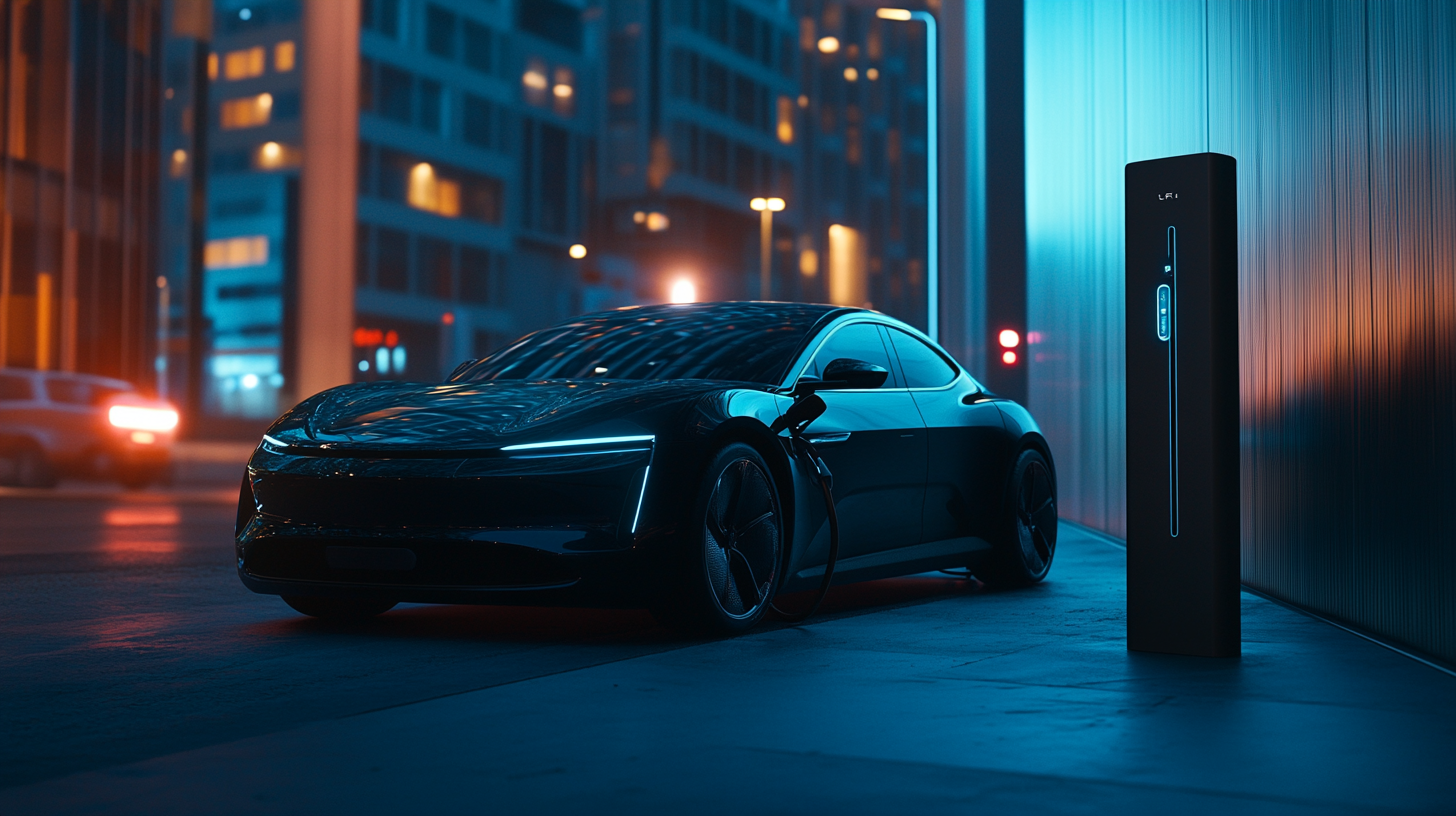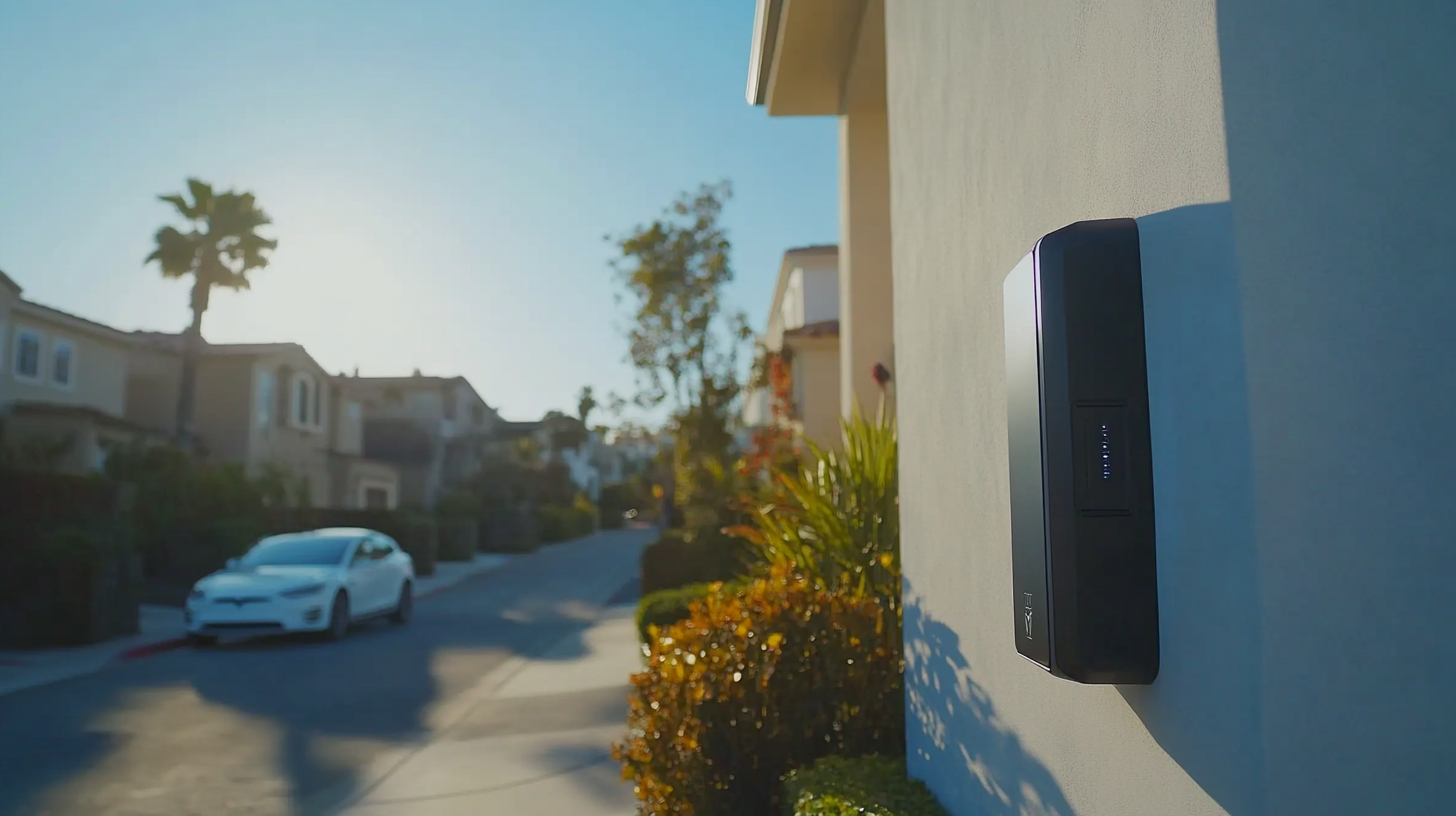As the world pivots towards sustainable energy solutions, electric vehicles (EVs) are at the forefront of this transformative wave. However, the true potential of EVs can only be realized with the proper charging infrastructure, making EV Wallbox solutions an essential component of this shift. These innovative charging stations provide a convenient and efficient way to power electric vehicles at home or in public spaces, ensuring that users can seamlessly integrate EV ownership into their daily lives. As technology advances, the development of smarter and more efficient EV Wallbox options promises not only to enhance the charging experience but also to contribute significantly to the reduction of carbon emissions and reliance on fossil fuels. This blog will explore the compelling advancements in EV Wallbox technology and their role in shaping a sustainable automotive future.

The electric vehicle (EV) market is rapidly expanding, driven by societal demands, technological advancements, and supportive government policies. As consumers become more environmentally conscious, the demand for EVs has surged, leading to significant growth in the industry. The market is expected to continue on this upward trajectory as companies innovate their products and diversify their offerings. Notably, the development of advanced EV wallbox solutions is crucial as it addresses the growing need for efficient charging infrastructure to support a burgeoning EV landscape.
Emerging economies, particularly in regions like India, are capitalizing on this momentum by enhancing their EV manufacturing policies to attract foreign investment. This legislative shift opens up new opportunities for international auto manufacturers to contribute to the local economy, while also playing a key role in the global transition towards more sustainable transportation options. As industries adapt to these changes, the electric vehicle sector stands at the forefront of innovation and growth, providing promising avenues for both consumers and manufacturers alike.
As electric vehicles (EVs) continue to reshape the automotive landscape, understanding the technology behind EV wallboxes becomes increasingly essential. These charging solutions not only provide a convenient way to power up your vehicle but also come equipped with key features that enhance user experience. For instance, many wallboxes offer smart connectivity, allowing users to monitor charging status and energy consumption through mobile apps. This feature enables drivers to optimize charging times, taking advantage of lower electricity rates during off-peak hours, thus saving money while being eco-friendly.
In addition to smart technology, safety is paramount in EV wallbox design. Most units include built-in safeguards against overcurrent and overloads, ensuring that both the vehicle and home electrical systems remain protected during charging. Furthermore, many EV wallboxes are designed for easy installation and compatibility with various vehicle models. This versatility not only simplifies the transition to electric driving but also encourages more consumers to adopt EVs, contributing to a more sustainable future. With these innovative solutions, the charging experience is made more efficient and accessible, paving the way for the next wave of electric mobility.
As electric vehicles (EVs) gain popularity, the importance of innovative charging solutions cannot be overstated. These advancements not only streamline the charging process but also enhance the overall user experience and accessibility. With sleek designs and smart technology, modern EV wallbox solutions cater to the needs of diverse users, making it easier than ever to charge at home or on the go.
**Tip**: When selecting an EV wallbox, consider one that offers smart features such as scheduling and remote monitoring. This allows users to charge their vehicles during off-peak hours, saving both time and money while minimizing impact on the grid.
Additionally, accessibility is crucial in promoting widespread adoption of electric vehicles. Innovative solutions, like adjustable mounts or wireless charging options, can accommodate various user needs, ensuring everyone can benefit from EV technology.
**Tip**: Always check for compatible charging solutions based on your vehicle's model. Many manufacturers now provide recommendations or required specifications to help users choose the right wallbox, which can optimize charging speeds and efficiency. By embracing these innovative charging solutions, we can create a cleaner, more sustainable future, where EVs are accessible to all.

The transition to electric vehicles (EVs) marks a significant step toward a sustainable future, and innovative wallbox solutions play a critical role in this shift. According to the International Energy Agency (IEA), global electric car sales surged to 6.6 million units in 2021, and are projected to reach 145 million by 2030, driven by advancements in charging infrastructure such as wallboxes. These home charging stations enable users to tap into renewable energy sources more efficiently, significantly reducing carbon emissions associated with traditional fossil fuels.
Wallboxes offer compelling energy efficiency benefits, particularly when equipped with smart technology. A study by the Rocky Mountain Institute indicates that households with a wallbox can reduce their electricity consumption by up to 20%, compared to conventional charging methods. Additionally, utilizing time-of-use rates through these systems allows consumers to charge their vehicles during off-peak hours, further decreasing energy costs and strain on the grid. By harnessing such innovations, not only do EV wallboxes enhance the usability of electric vehicles, but they also contribute to a greener planet, illustrating the powerful intersection of technology, sustainability, and energy efficiency.

As electric vehicles (EVs) gain traction globally, the need for robust and intelligent charging infrastructure becomes paramount. The integration of smart technology into EV charging solutions—such as innovative wallbox designs—promises to revolutionize the way we charge and interact with our vehicles. These smart wallboxes can optimize charging times based on electricity rates, ensuring that users benefit from lower costs while contributing to a healthier grid. Additionally, features like remote monitoring and control through mobile apps empower users to manage their charging sessions effectively, reducing concerns about energy consumption and availability.
Moreover, the incorporation of advanced technologies such as artificial intelligence and machine learning into EV charging solutions can enhance user experience. By analyzing charging patterns and energy demands, these smart systems can provide personalized recommendations, enabling users to charge their vehicles more efficiently. Furthermore, with the rise of renewable energy sources, future wallbox solutions could integrate seamlessly with solar power systems, allowing EV owners to utilize clean energy for their charging needs. As we move towards a more sustainable future, embracing smart technology in EV charging infrastructure is not just beneficial but essential for fostering widespread adoption of electric vehicles.
| Feature | Description | Benefits | Future Integration |
|---|---|---|---|
| Smart Charging | Charge management based on energy demand and supply. | Cost savings and efficient energy use. | Integration with renewable energy sources. |
| Mobile App Integration | Control charging sessions remotely via a mobile app. | Convenience and user engagement. | Potential for real-time updates and analytics. |
| Adaptive Load Management | Automatically optimizes charging based on grid conditions. | Reliability and stability in energy distribution. | Enables smart grid functionalities. |
| Payment Solutions | Seamless payment integration for charging services. | User-friendly and reduces transaction time. | Integration with digital wallets and payment apps. |
| Data Analytics | Collection of user data to improve services. | Enhanced customer experience and service customization. | Insights for predicting charging trends. |
